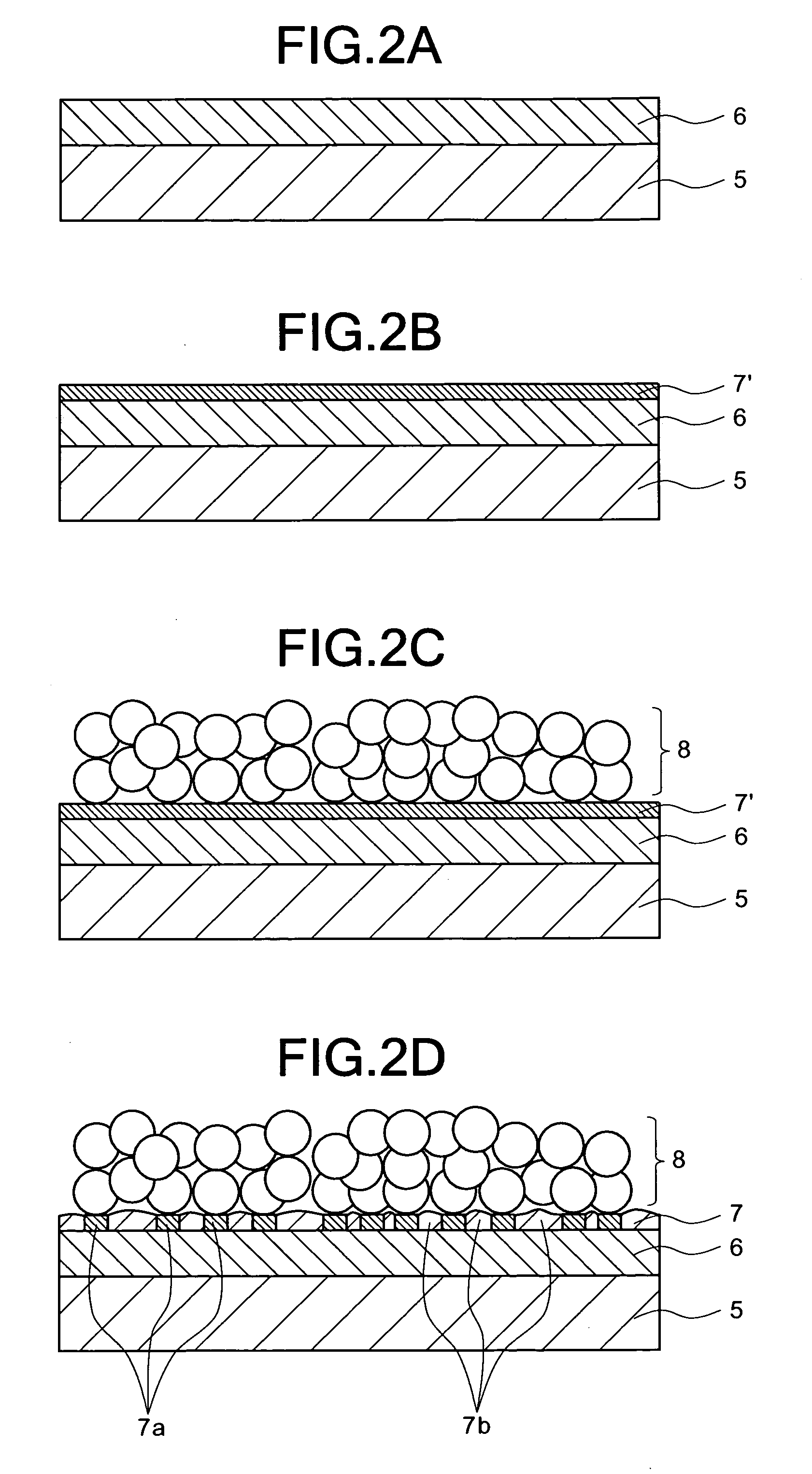Photoelectrode substrate of dye sensitizing solar cell, and method for producing same
- Summary
- Abstract
- Description
- Claims
- Application Information
AI Technical Summary
Benefits of technology
Problems solved by technology
Method used
Image
Examples
example
[0041] An example of a photoelectrode substrate for a dye sensitizing solar cell and a method for producing the same according to the present invention will be described below in detail.
[0042] First, there was prepared a substrate member with ITO film wherein a transparent electrode film of ITO (ITO film) 6 was formed on the surface of a substrate member 5 of polyethylene naphthalene (PEN) (the plate member having a rectangular planar shape, each side having a length of 5 cm, and the plate member having a thickness of 125 μm and a value of electric resistance of 10Ω / □) (see FIG. 2A). The substrate member with ITO film, together with titanium serving as a target material, was arranged in a vacuum device into which argon gas was fed at 50 sccm. Then, a sputtering process using plasma produced on the surface of the target material by a high-frequency discharge (13.56 MHz, 400 W) was carried out for sixty seconds to form a metal film (titanium film) 7′ having a thickness of 10 nm on th...
PUM
 Login to View More
Login to View More Abstract
Description
Claims
Application Information
 Login to View More
Login to View More - R&D
- Intellectual Property
- Life Sciences
- Materials
- Tech Scout
- Unparalleled Data Quality
- Higher Quality Content
- 60% Fewer Hallucinations
Browse by: Latest US Patents, China's latest patents, Technical Efficacy Thesaurus, Application Domain, Technology Topic, Popular Technical Reports.
© 2025 PatSnap. All rights reserved.Legal|Privacy policy|Modern Slavery Act Transparency Statement|Sitemap|About US| Contact US: help@patsnap.com



